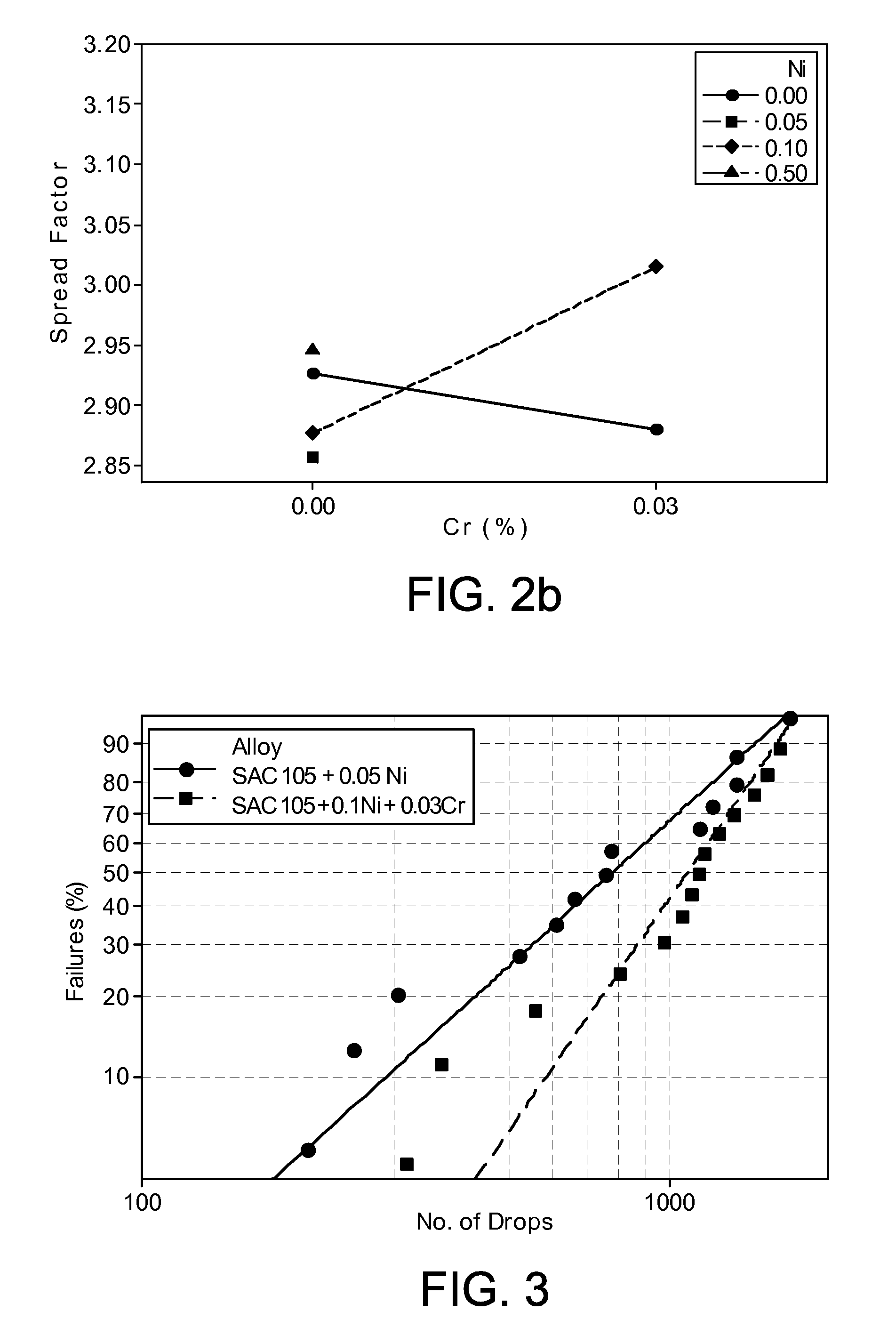Solder alloy
a solder alloy and alloy technology, applied in the field of alloys, can solve the problems of low ductility, brittle imc, and major problems of electronic industry, and achieve the effect of improving the solder alloy
- Summary
- Abstract
- Description
- Claims
- Application Information
AI Technical Summary
Benefits of technology
Problems solved by technology
Method used
Image
Examples
example 1
[0095]An alloy was prepared by melting Sn in a cast iron crucible (alternatively a ceramic crucible can be used). To the molten Sn was added an alloy of Sn-3 wt % Cu, and alloys of Sn-5 wt % Ag and Sn-0.35 wt % Ni. These additions were made with the alloy bath temperature at 350° C. The bath was cooled to 300° C. for the addition of phosphorus in the form of an alloy Sn-0.3% P.
[0096]The alloy was sampled to verify the composition of
Ag0.3 wt %Cu0.7 wt %P0.006 wt % and remainder tin
[0097]The alloy composition was then jetted as a metal stream into an inerted vertical column. The metal stream was spherodised by the application of magnetostrictive vibrational energy applied through the melt pot and at or near the exit orifice.
[0098]Equally, the alloy composition could be punched and then spherodised as a sphere.
[0099]The alloy, provided in the form of a sphere, can be used in a ball grid array joint or chip scale package. Flux is printed or pin transferred to the pads of a CSP. The sphe...
example 2
[0101]The following alloy composition was prepared in a similar manner to Example 1 (all wt. %)
Ag0.3Cu0.7Ni0.2P0.006Snbalance
[0102]This alloy may be provided in the form of a sphere and used in a ball grid array joint or chip scale package.
example 3
[0103]The following alloy composition was prepared in a similar manner to Example 1.
Ag0.3Cu0.7Co0.2P0.006Snbalance
[0104]This alloy may be provided in the form of a sphere and used in a ball grid array joint or chip scale package.
PUM
 Login to View More
Login to View More Abstract
Description
Claims
Application Information
 Login to View More
Login to View More - R&D
- Intellectual Property
- Life Sciences
- Materials
- Tech Scout
- Unparalleled Data Quality
- Higher Quality Content
- 60% Fewer Hallucinations
Browse by: Latest US Patents, China's latest patents, Technical Efficacy Thesaurus, Application Domain, Technology Topic, Popular Technical Reports.
© 2025 PatSnap. All rights reserved.Legal|Privacy policy|Modern Slavery Act Transparency Statement|Sitemap|About US| Contact US: help@patsnap.com



